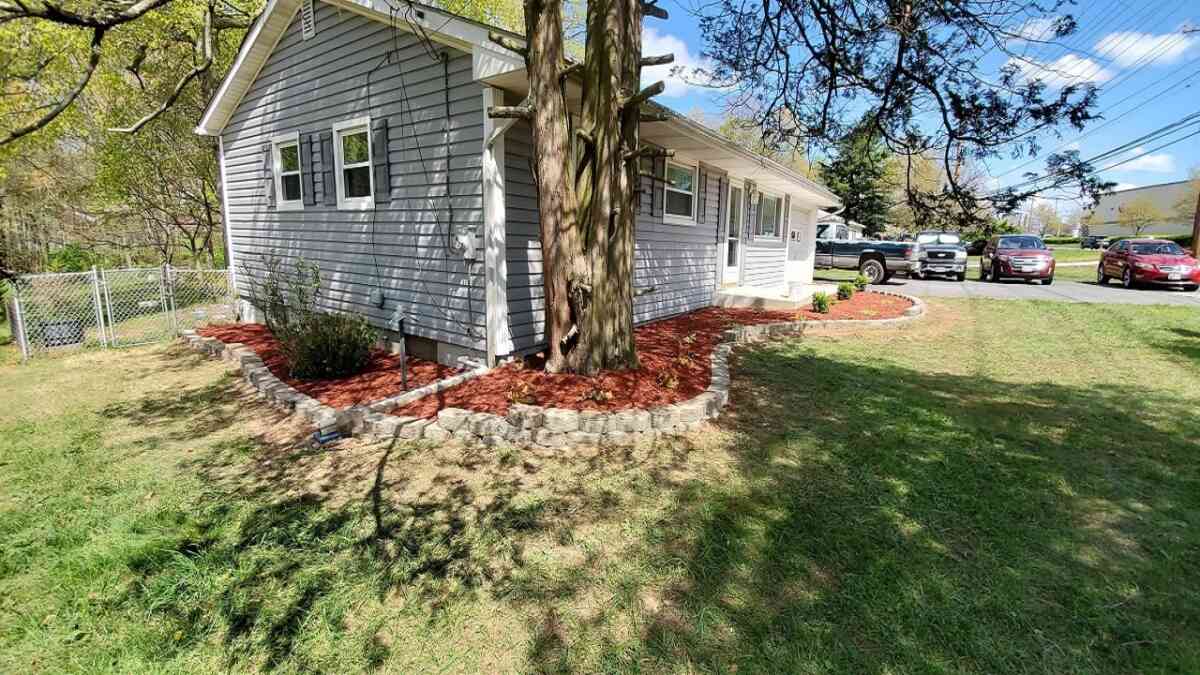Reusing Old Mulch - The Detail Guys MD
Reusing old mulch in landscaping can be a great method to enrich the soil and save money. Old mulch is typically composed of wood materials, which can strip soils of the nitrogen it needs. It is possible to add compost or other nitrogen-rich materials to accelerate the process. Find out more about the best ways to recycle old mulch in landscaping. Below are several methods to recycle old mulch. We hope you will find the one that is suitable for your needs.
Remove the fungus-ridden mulch
If you're looking to change your mulch, first look for signs of disease. If you notice any disease signs, remove the mulch from your yard and dispose of it properly. It is possible to reuse the mulch in the event that it's not moldy. If you spot any fungi, take the mulch from the soil and dispose it in a proper manner. To dispose of it in a safe manner you should check with the city for the appropriate disposal method. After you've disposed of it properly, you can recycle it with new mulch.
If you are considering the use of wood mulch, then you should remember that it is competing with your plants' nitrogen content. Mixing wood mulch with compost will help decrease the likelihood of developing plant diseases. Wood mulch is also a source of microorganisms, which accelerate the process of decomposition. Also, this type of mulch can increase the nitrogen content in your compost pile. Your plants will have access to the nitrogen that is deeper within the soil.
Mixing compost
Many gardeners don’t know what to do with their old mulch. It's not just costly, but it's also biodegradable, so why not to throw it away? What about the compost? It is biodegradable and can be recycled! Mixing old mulch with compost will make it much easier for organic fertilizer (or other materials) to break down faster. In addition, it can help protect your soil from the harsh winter conditions.
Mulch can be used all through all through the entire year. Mulch can be used around plants to shield them from winter chills and also provide shelter for earthworms. It gradually adds organic matter to soil, improving its physical qualities. To allow the soil to heat up and get sunlight, it is recommended to remove mulch from the plants that are young. However, if you have plants that flower in summer then you can keep the mulch around the plants.
Mixing mulch with compost is a great idea if you plan to reuse it for landscaping. It's not recommended to bury it directly in your soil because it can easily be carried away by winds or severe weather. It won't rot if it remains usable in spring. It'll still be usable in the spring following.
Making use of old mulch to create a soil amendment
One of the best ways to use old mulch is to mix it with compost or organic soil amendments. The most effective mulch for trees are wood chips, which retain water for a long time and decrease temperatures of the soil. The old mulch is easily carried away by wind and inclement weather. This could result in an unsanitary situation for you. It's not your responsibility to worry about this.
If you're new to gardening, you might be wondering whether you should use older mulch. Unlike other gardening essentials, mulch has a longer shelf life. It's an ideal option to provide nutrients to a plant bed, protect it from the harsh elements and keep weeds out, and act as a slow-release fertilizer. It can also be biodegradable. Whether you use it as a soil amendment or as a barrier to the growth of weeds, it has many benefits.
Recycling mulch
Recycling old mulch for landscaping is an economical way to safeguard your soil and also save money. But, it's crucial to remember certain safety precautions when handling old mulch. Certain types of wood are high in nitrogen, and they can quickly gobble up the soil. To increase the quality of soil and improve the soil's quality, mix the old mulch with compost or other organic matter if you plan to reuse it. Wood chips are better than normal mulch, and they retain the water much more slowly. They also decrease temperatures in the soil.
Conclusion
To eliminate clumps of old mulch, make into it a tiny hole and then rake it towards the edge of your yard. After that, you can apply the new mulch. It is important that you apply it to the depth of three to four inches. To ensure optimal performance, this depth is essential. To ensure that your new mulch doesn't ruin your garden beds, place the old mulch on a paper to stop the mulch from staining.

